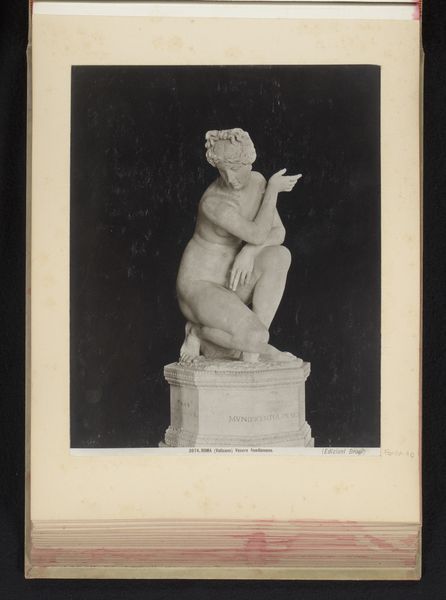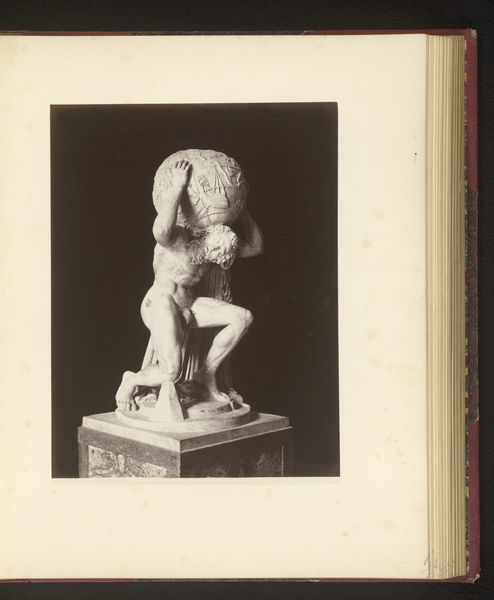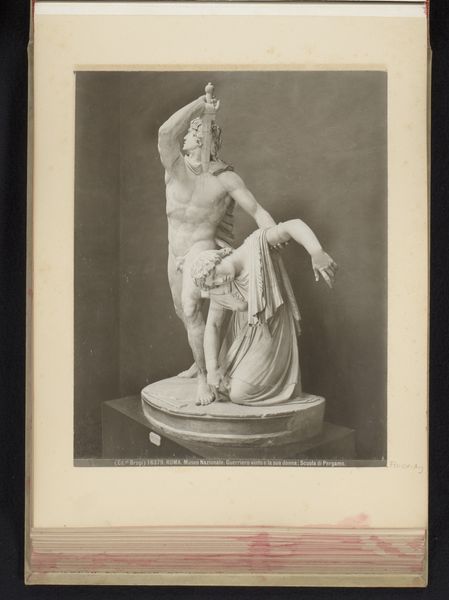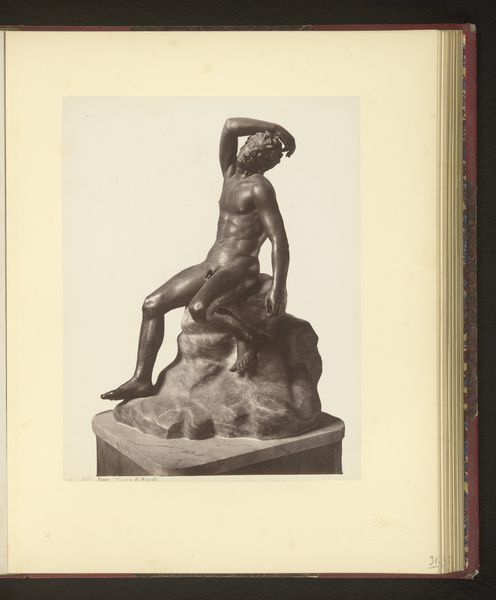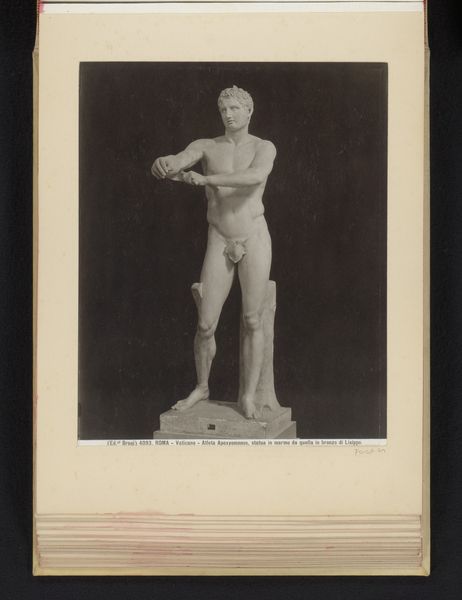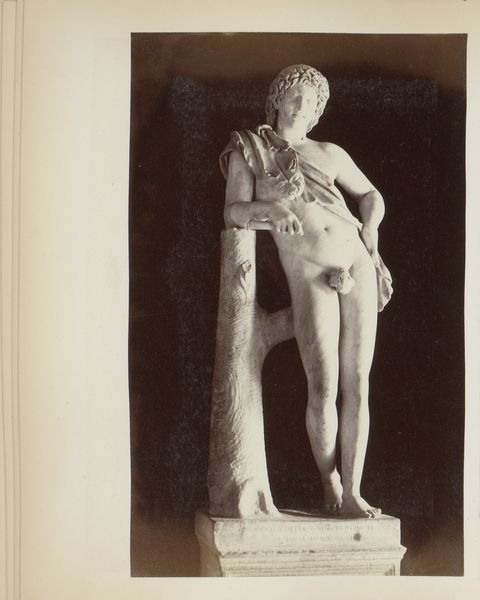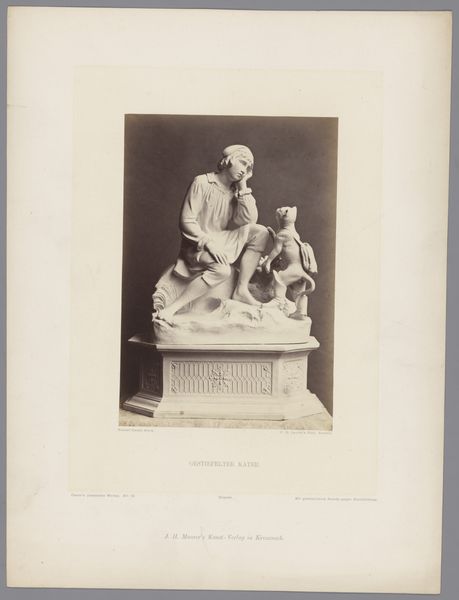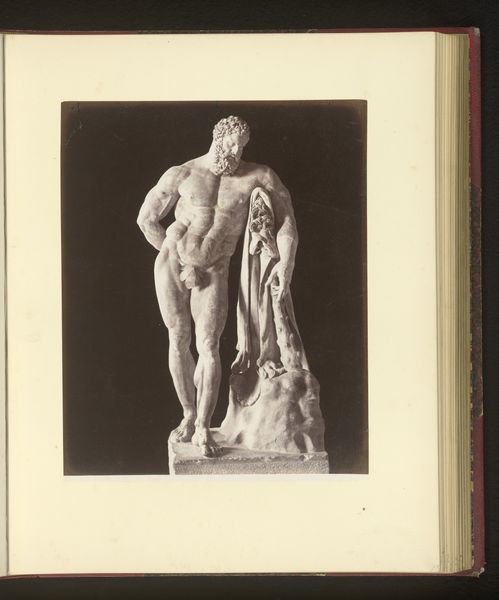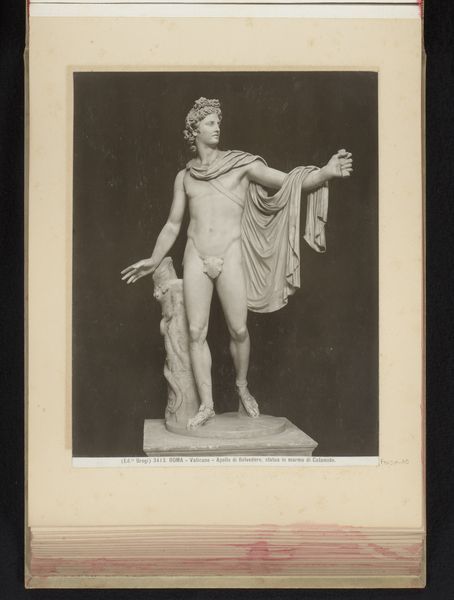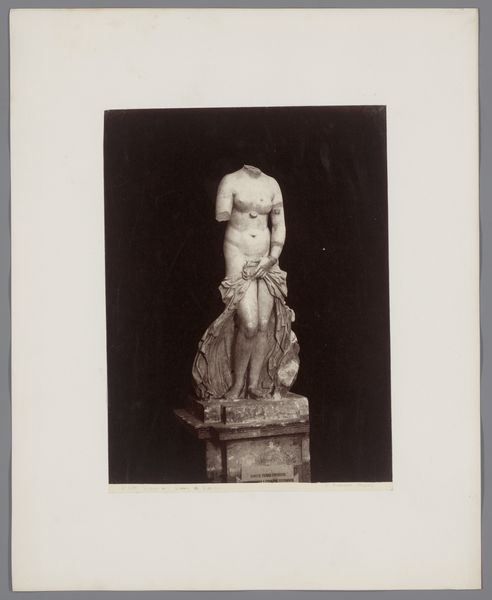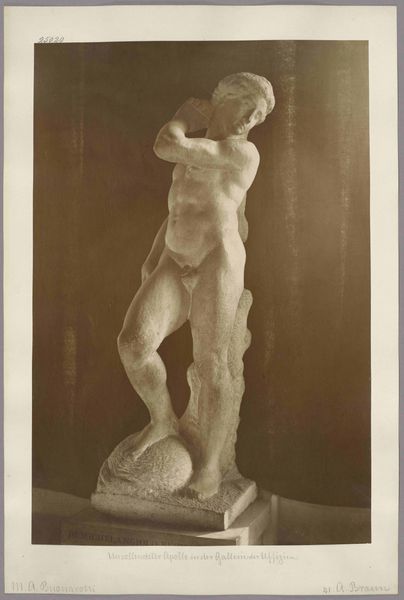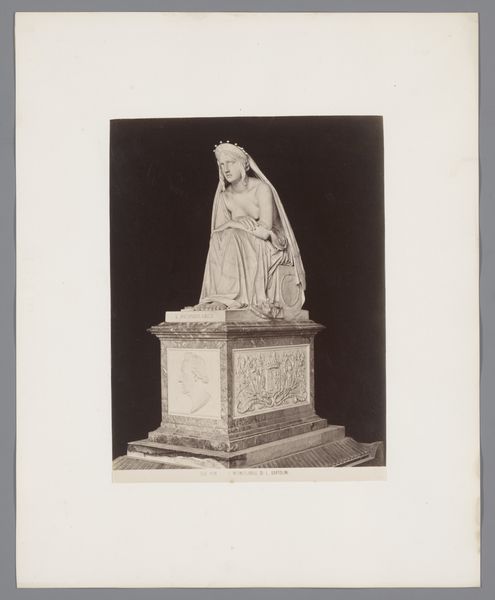
Sculptuur van een Scyth in de Galleria degli Uffizi te Florence, Italië 1870 - 1881
0:00
0:00
bronze, photography, sculpture
#
portrait
#
sculpture
#
greek-and-roman-art
#
classical-realism
#
bronze
#
photography
#
sculpture
#
realism
Dimensions: height 249 mm, width 199 mm
Copyright: Rijks Museum: Open Domain
Editor: So, here we have a photograph by Giacomo Brogi, taken sometime between 1870 and 1881, depicting a sculpture of a Scythian man inside the Uffizi Gallery in Florence. The figure is captured in a squatting pose, which is pretty interesting. What stands out to you? Curator: Well, it's a photograph *of* a sculpture, already framing the artistic context through a particular lens, the photographic gaze. Brogi's work reminds us of the 19th-century obsession with cataloging and presenting classical art to a wider audience through easily disseminated imagery. Do you see the ways that shifts power from the physical sculpture to the mass media representation? Editor: That’s an interesting point about power. It makes you wonder who decided which works to showcase and how that influenced public perception of art. Curator: Precisely. The Uffizi, as an institution, holds significant cultural capital. By photographing and distributing images of its collection, like this sculpture, Brogi participates in constructing a specific narrative of art history—one rooted in classical ideals, but mediated through a modern, photographic vision. How do you think the availability of such images affected artists who couldn’t travel to Florence to see these sculptures firsthand? Editor: It democratized art viewing to a certain extent, but maybe also set up some skewed ideas for people only seeing it through photography and not the real piece? Curator: Yes, accessibility is key but what is gained and what is lost when art becomes mediated through photography? How does this impact authenticity, and the artist's intended meaning? It raises big questions about art’s role in a rapidly changing society. Editor: This conversation has definitely opened my eyes to how photographs can also act as agents within the art world, distributing but also directing art history. Curator: Exactly! Art is so rarely just about the object itself, it’s about the network of ideas and influences surrounding it. And this network stretches much further back, but also towards our present time.
Comments
No comments
Be the first to comment and join the conversation on the ultimate creative platform.
